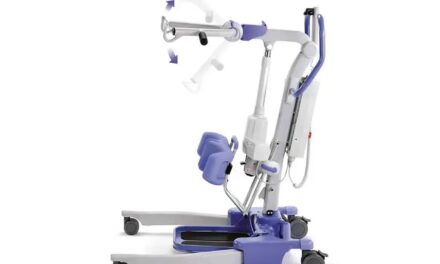In healthcare, particularly manual handling and rehabilitation, accurate assessment tools are essential for providing effective care plans and monitoring patient progress. One such indispensable tool is the FIM scoring system. FIM, or Functional Independence Measure, widely evaluates a patient’s functional status and independence levels. This comprehensive overview explains what FIM scoring is, why it is important, and how healthcare professionals use it in healthcare settings.
What is FIM Scoring?
Definition and Purpose
The Functional Independence Measure (FIM) is a scale used to assess a patient’s functional independence in performing activities, particularly within the field of rehabilitation. It involves the classification of a person’s mobility according to 7 levels of function, from independence to total assistance. It measures the degree of assistance required by an individual to carry out basic tasks, providing a standardised method to evaluate the functional capabilities of patients in a consistent and reliable manner.
History and Development
How FIM Scoring Works
The FIM Scale
The scale comprises 18 items, which are divided into two main categories: motor and cognitive functions. Each item is scored on a scale of 1 to 7, where 1 indicates total dependence and 7 indicates complete independence.
- Motor Function: This includes tasks such as eating, grooming, bathing, dressing, toileting, bladder and bowel management, transfers, and mobility.
- Cognitive Function: This includes comprehension, expression, social interaction, problem-solving, awareness, and memory.
Scoring Criteria
Each of the 18 items is assessed based on the level of assistance required in relation to activities of dailing living (ADL’s):
- Total Assistance: The patient needs 100% assistance to complete the task.
- Maximal Assistance: The patient needs about 75% assistance to complete the task.
- Moderate Assistance: The patient needs about 50% assistance to complete the task.
- Minimal Assistance: The patient needs about 25% assistance to complete the task.
- Supervision: The patient requires supervision and/or verbal prompting to complete the task.
- Modified Independence: The patient may require the use of an assistive device but no physical assistance.
- Complete Independence: The patient performs the task independently without any assistance or devices.
Calculating a FIM Score
The total score ranges from 18 to 126, with higher scores indicating greater independence. The scores for each of the 18 items are summarised to provide an overall picture of the patient’s functional abilities.
Why FIM Scoring is Important
Standardisation
By providing a standardised method of assessment, FIM scoring allows for consistent and reliable measurement of patient progress. This standardisation can prove crucial for comparing outcomes across different settings.
Comprehensive Assessment
Scoring provides a comprehensive assessment of a patient’s abilities, covering both physical and cognitive areas. This approach holistically ensures that healthcare professionals consider all aspects of a patient’s functional independence.
Facilitating Communication
FIM scoring facilitates clear communication among multidisciplinary teams. With a common language and standardised scores, healthcare providers can discuss a patient’s status and needs collaboratively and therefore more effectively.
More Effective Resource Allocation
FIM scores can assist in the efficient allocation of resources. By understanding the level of care required, healthcare facilities can allocate staff and equipment more effectively, ensuring that patients receive the correct and necessary support.
Goal Setting and Treatment Planning
FIM scores help healthcare providers set realistic goals and develop tailored treatment plans. By identifying specific areas where a patient needs assistance, therapists can focus on interventions that will have the most significant impact on improving independence and mobility.
Monitoring Progress
FIM scores are used to monitor patient progress over time. Regular assessments can show improvements or declines in functional abilities, allowing for adjustments in treatment plans if necessary.
Improved Outcomes
By focusing on specific areas of need, FIM scoring helps improve patient outcomes. Targeted interventions based on FIM scores can lead to more significant improvements in a patient’s independence and overall quality of life.
Implementing FIM Scoring in Healthcare Settings
Training and Certification
Healthcare providers need proper training and certification to accurately use the FIM scoring system. Training programs ensure that providers understand the scoring framework and can apply it correctly and consistently.
Regular Assessments
Regular FIM assessments are essential for tracking patient progress and adjusting treatment plans. Healthcare professionals typically conduct assessments at admission, discharge, and various points throughout the rehabilitation process.
Integrating Technology
Integrating technology can enhance the efficiency and accuracy of FIM scoring. Electronic health records (EHRs) and specialised software can streamline data collection, scoring, and analysis.
Multidisciplinary Approach
A multidisciplinary approach is crucial for effective FIM scoring. Collaboration among physicians, nurses, occupational therapists, physical therapists, and other healthcare professionals ensures comprehensive assessments and holistic care.
FAQs:About FIM Scoring
What is the purpose of FIM scoring?
FIM scoring assesses a patient’s functional independence, helping healthcare providers develop tailored treatment plans and monitor their progress.
Who can use FIM scoring?
Trained and certified healthcare professionals, including occupational therapists, physical therapists, and rehabilitation nurses, use FIM scoring.
How often should FIM assessments be conducted?
Healthcare professionals typically conduct these assessments at admission, discharge, and appropriate points throughout the rehabilitation process to track progress and adjust treatment plans.
Can FIM scoring be used in all healthcare settings?
While healthcare professionals most commonly use this scoring in rehabilitation settings, they can adapt it for various healthcare environments, including hospitals and long-term care facilities.
What are the limitations of FIM scoring?
This scoring requires proper training and consistency in application. Additionally, it may not capture all aspects of a patient’s condition, such as pain levels or psychological factors.
Conclusion
FIM scoring is a vital tool in healthcare, offering a standardised and comprehensive method for assessing a patient’s functional independence. By providing detailed insights into both motor and cognitive functions, FIM scores help healthcare providers develop effective treatment plans, monitor progress, and improve patient outcomes.
Implementing this scoring in healthcare settings requires proper training, regular assessments, and a multidisciplinary approach, but the benefits in terms of enhanced patient care and improved rehabilitation outcomes are well worth the effort.
To read the original article please see here




